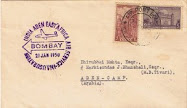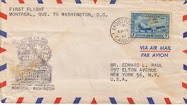For various reasons I have not been able to post for some time. Best of intentions seem to go awry.
Continuing the saga of the pioneers of aviation...........
The flying bug bit quite a few in Europe who experimented in different ways to fly. One of the early steps was gliding.
One of the most successful of the of the nineteenth century 'bird-men' was Otto Lilienthal, a German who made determined efforts to fly with wings. He studied the flight of birds and published his theories and conclusions in his famous book Birdflight .
He was the first person to make repeated successful gliding flights and came to be known as the Glider King. Newspapers and magazines in many countries published photographs of Lilienthal gliding, favorably influencing public and scientific opinion about the possibility of flying machines becoming practical reality after ages of idle fantasy and unscientific tinkering.
Lilienthal 's greatest contribution was the development of heavier-than-air flight. He madeover 2000 glides experimenting with various forms of winged craft. His glides were from an artificial hill he built near Berlin, and also from natural hills, especially in the Rhinow region. Lilienthal succeeded in making sustained flights of upto 700 to 800 feet from hilltops. He was the first to make use of cambered wings and virtually the first to use wings with positive results.
As an inventor Lilienthal had invented a small engine, the "Otto" motor and might have well been the first to fly a powered aircraft. Unfortunately, his career was cut short on 9th August, 1896
when he fell from a height of 56 feet.his injuries proved fatal and he passed away the next day.
Stamp issued by Germany in 1934 with his picture and his gliding attempt in the background..
His achievements inspired the Wright Brothers to become the pioneers of powered flight. They credited him as a major inspiration for their decision to pursue manned flight. However, they abandoned his aeronautical data after two seasons of gliding and began using their own wind tunnel data
A stamp issued by Germany in 1978.
Special postmark for the stamp issue.
Hungarian stamp showing Otto Lilienthal in the background






























